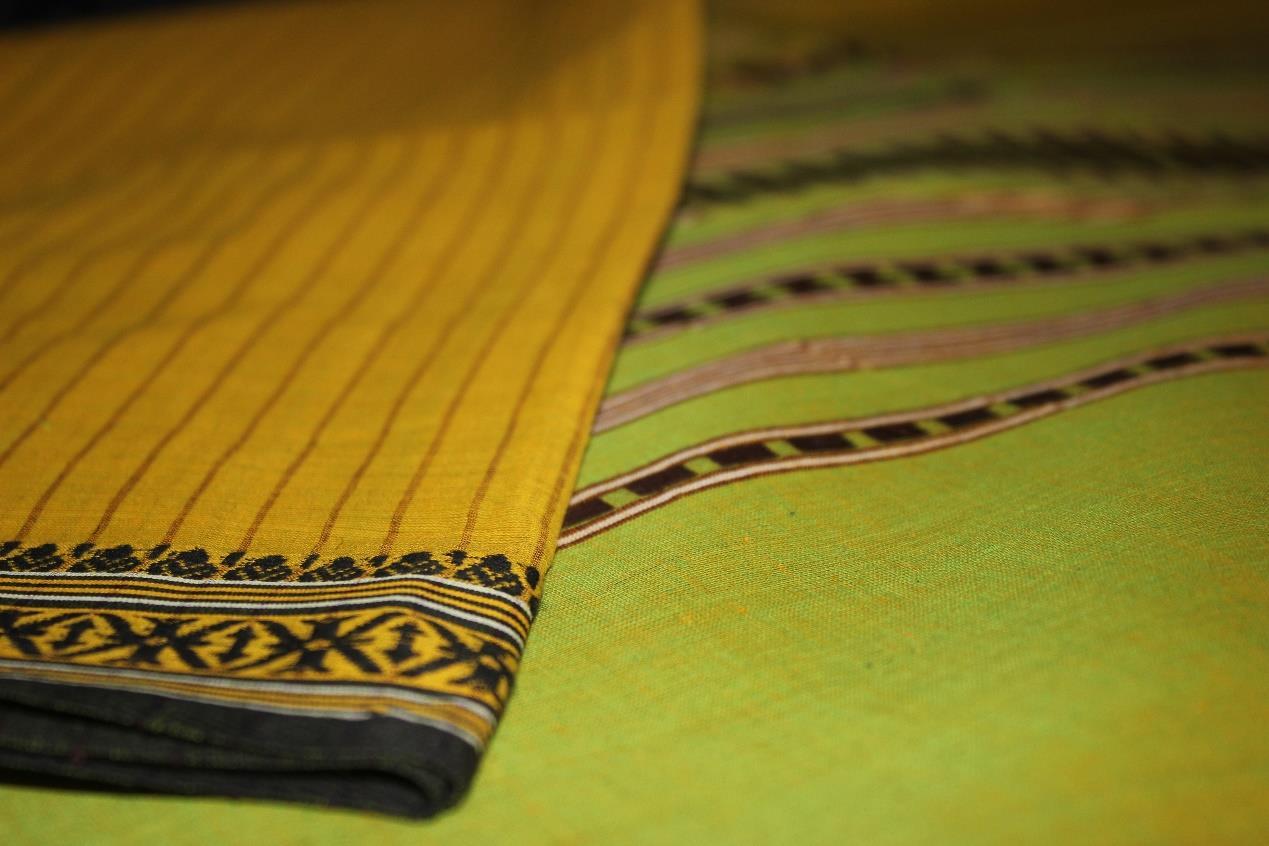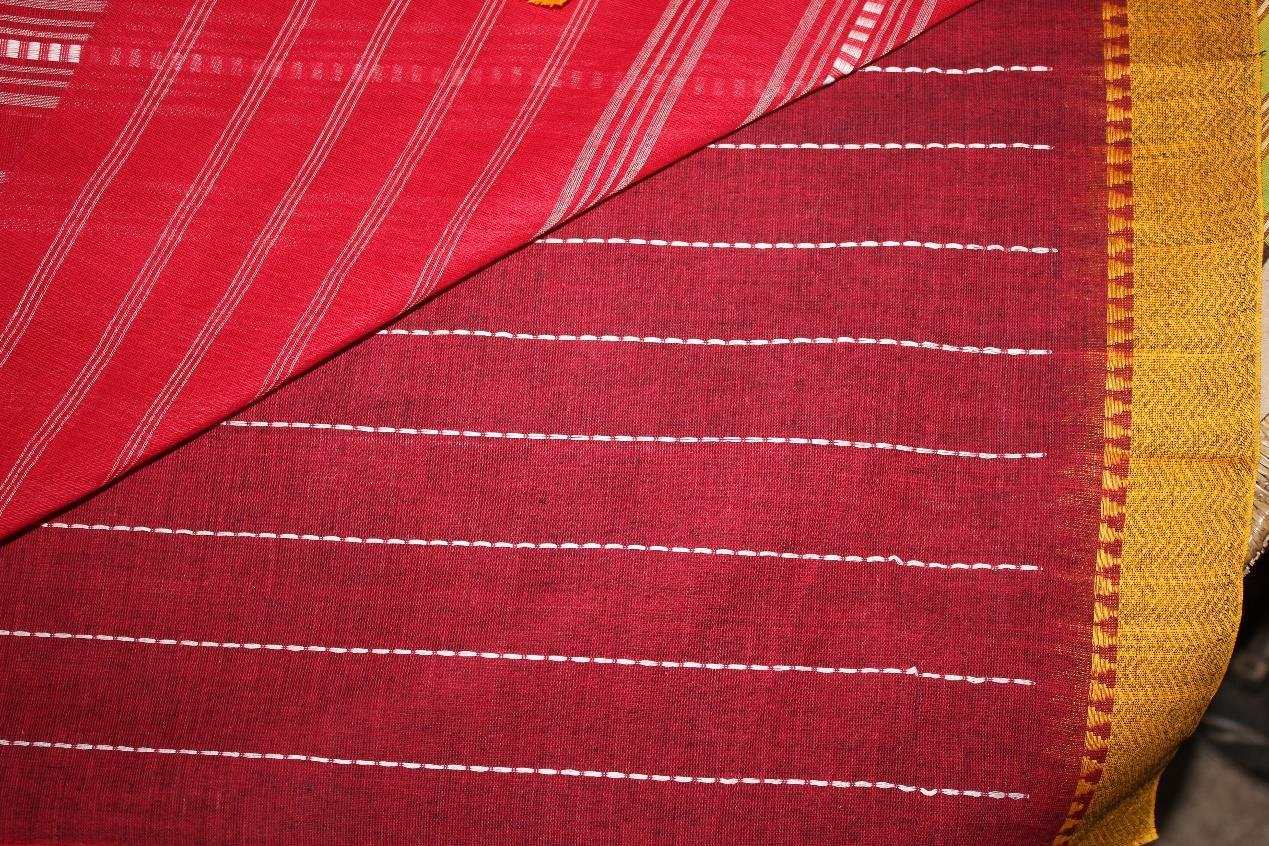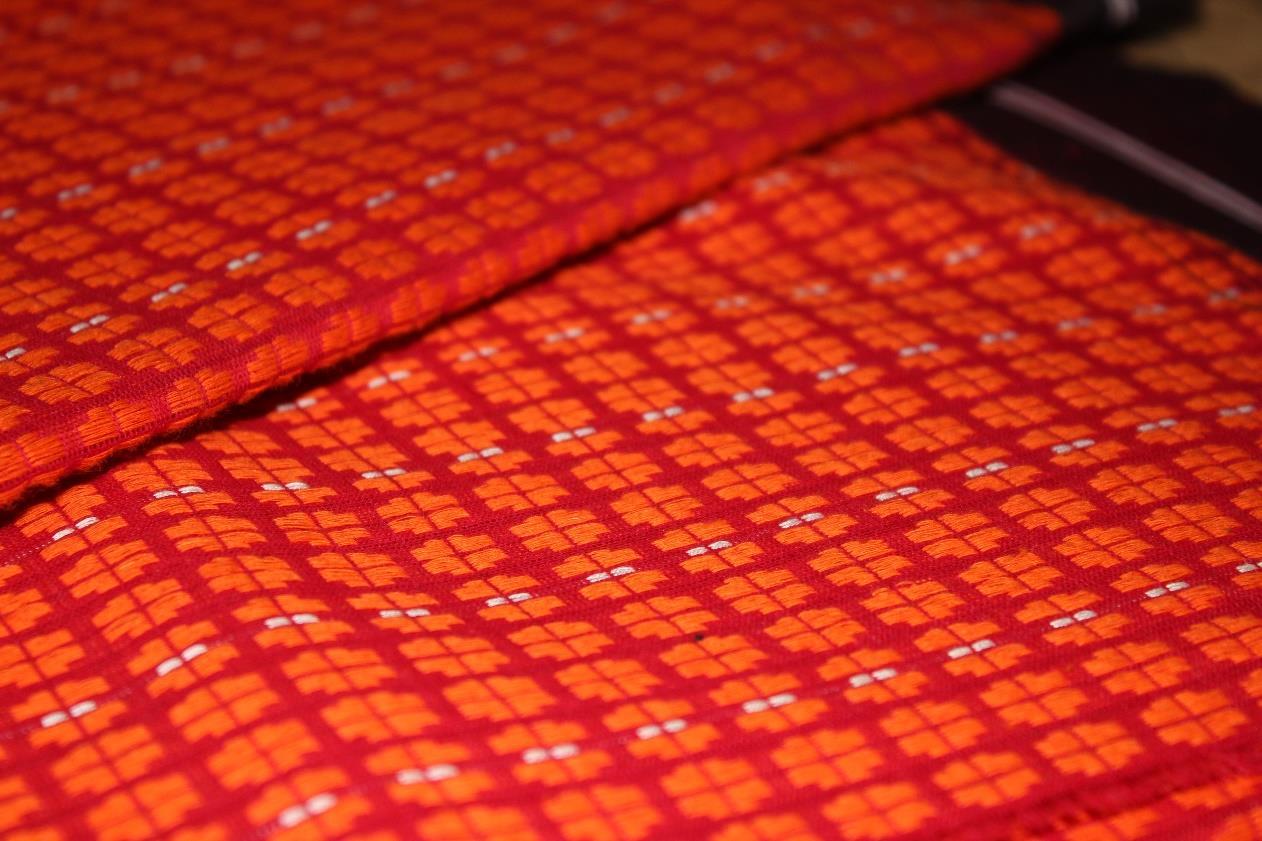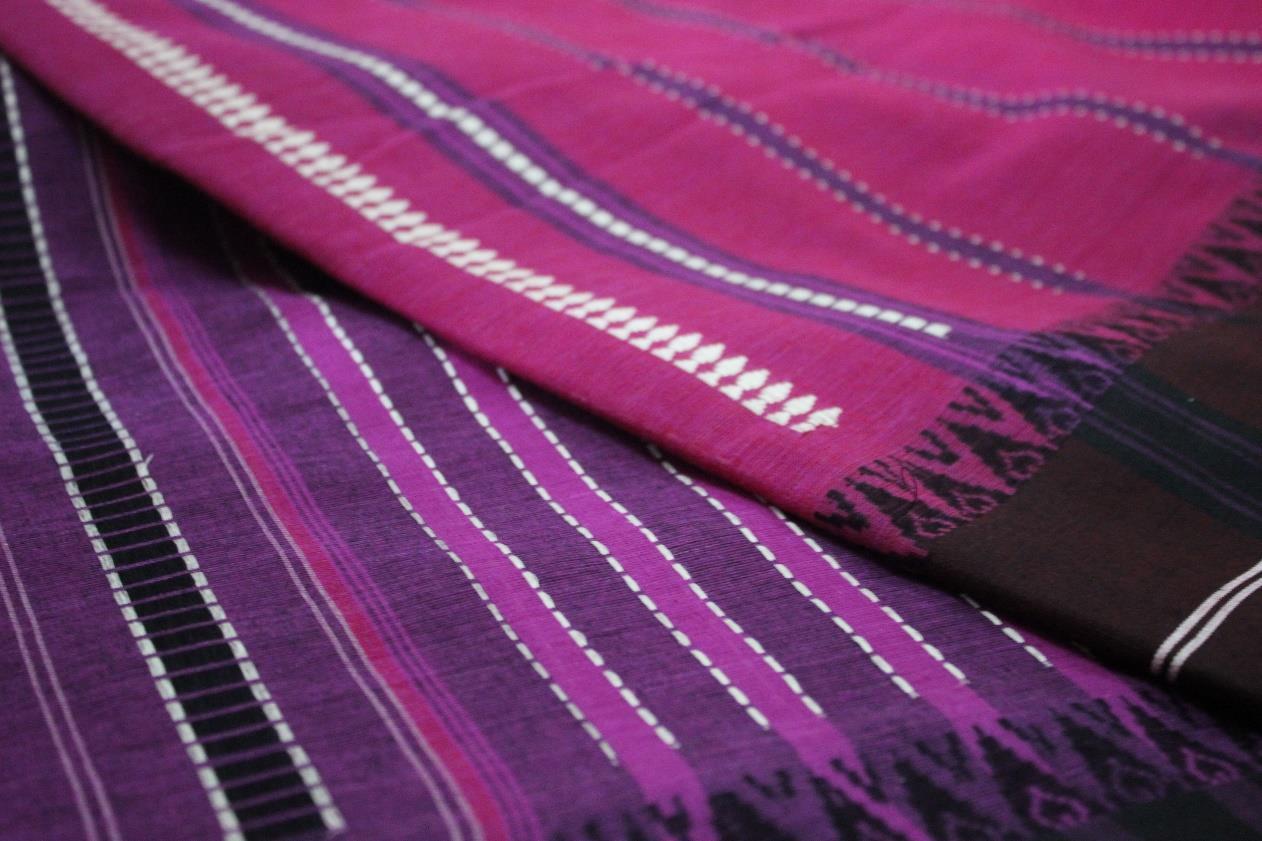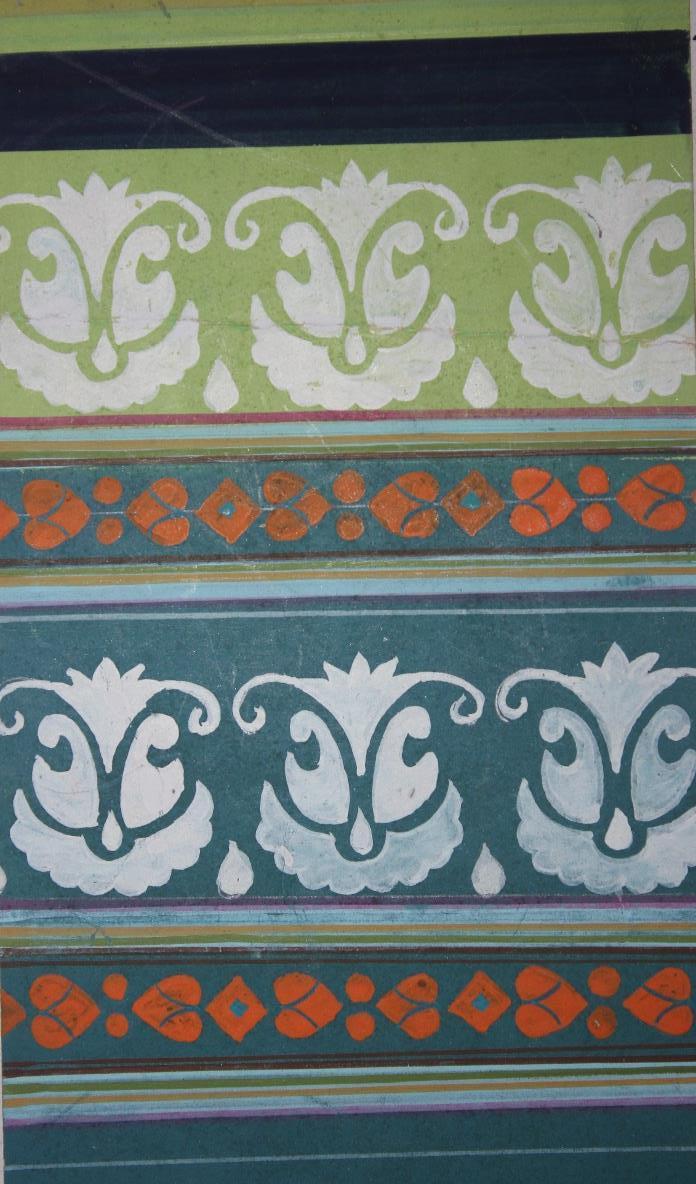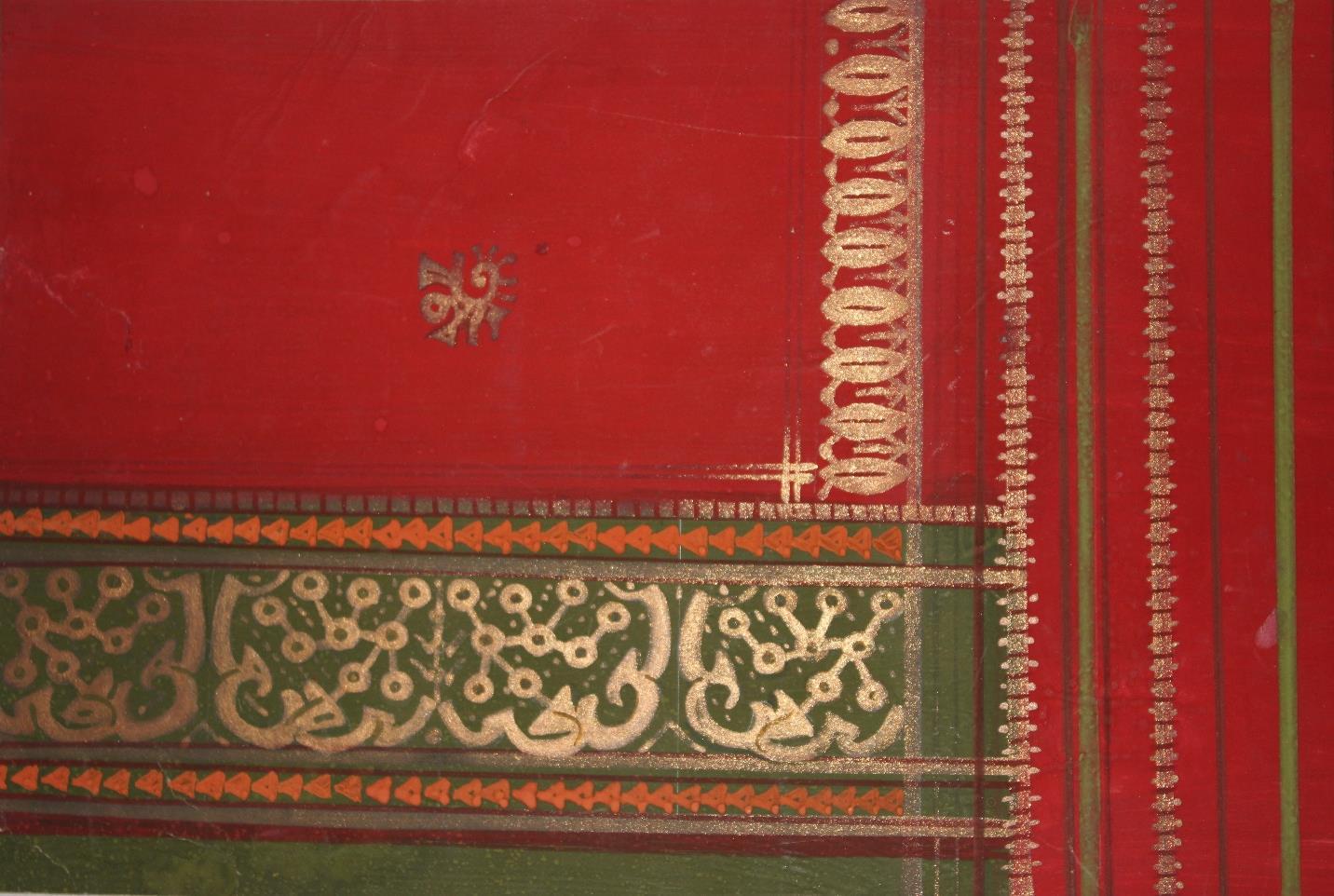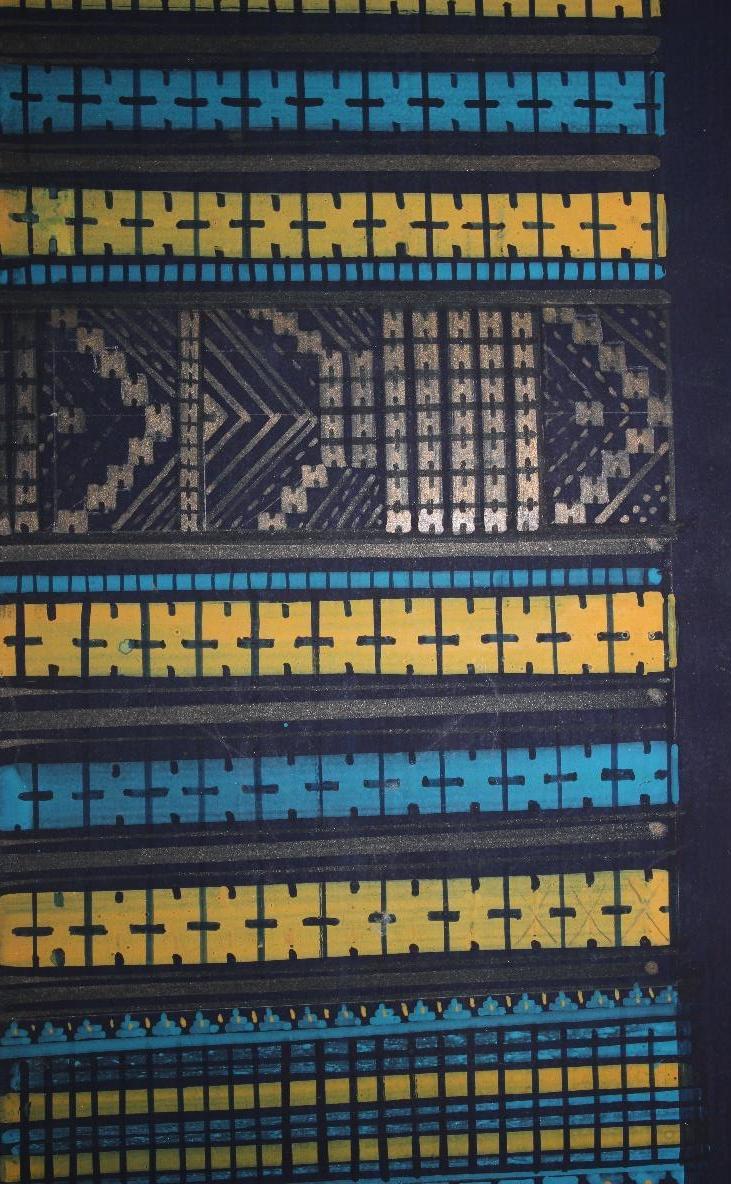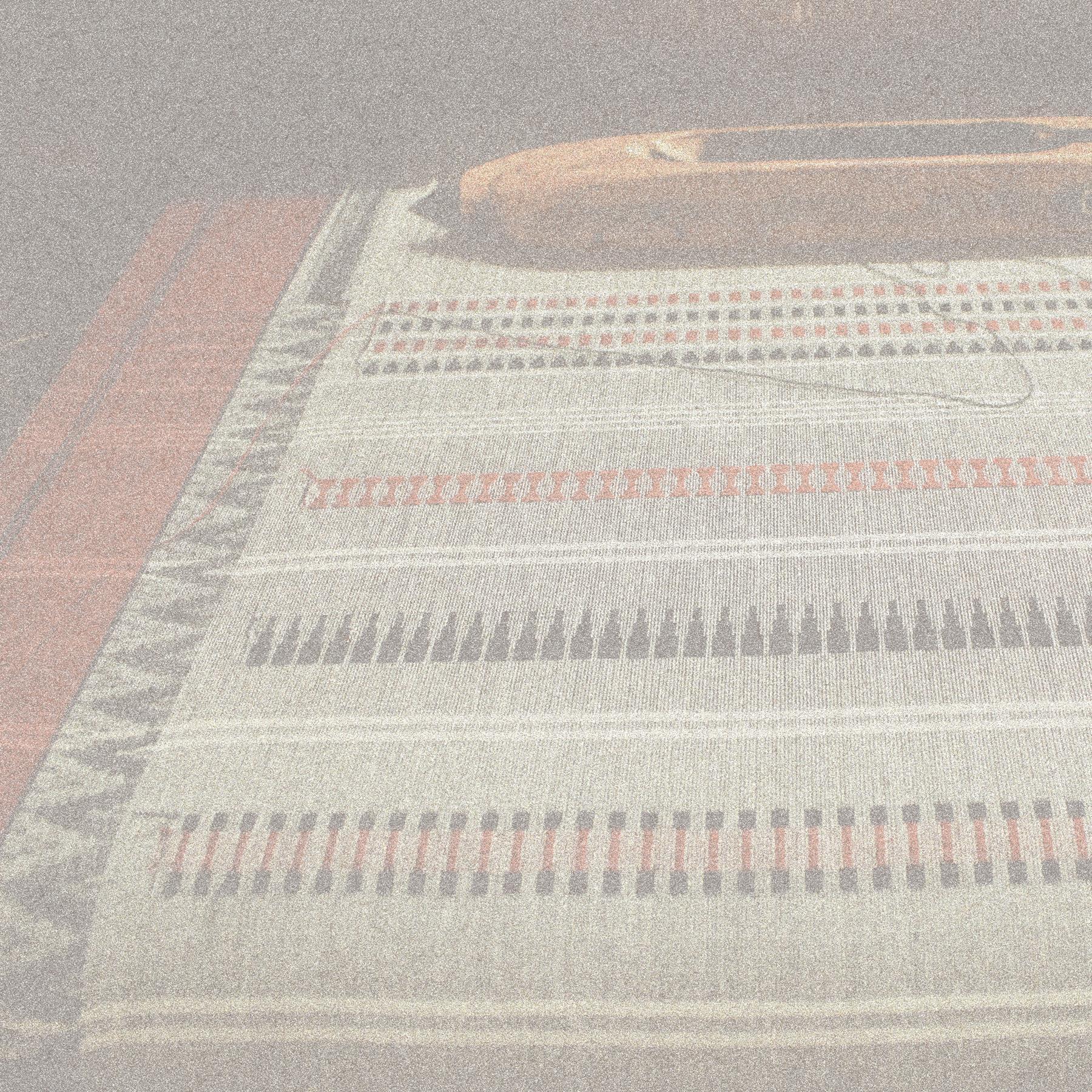
3 minute read
5) BEGAMPUR HANDLOOM CLUSTER
LOOM PROCESSES
Weaving can be summarized as a repetition of these three actions, also called the primary motion of the loom.
Advertisement
• SHEDDING
The ends are separated by raising or lowering heald frames (heddle) to form a clear space where the pick can pass. • PICKING
The weft or pick is propelled across the loom bye a shuttle. The weft is pushed up against the fell of the cloth by the reed. BEATING-UP
The warp is divided into two overlapping groups, or lines (most often adjacent threads belonging to the opposite group) that run in two planes, one above another, so the shuttle can be passed between them in a straight motion. Then, the upper group is lowered by the loom mechanism, and the lower group is raised (shedding), allowing to pass the shuttle in the opposite direction, also in a straight motion. Repeating these actions form a fabric mesh but without beatingup, the final distance between the adjacent wefts would be irregular and far too large. The secondary motion of the loom are the:
LET OFF MOTION
The let-off motion delivers the warp to the weaving area at the required rate and at constant tension by unwinding it from the weaver‘s beam. The secondary motions are carried out simultaneously.
TAKE UP MOTION
The take-up motion withdraws the cloth from the weaving area at a constant rate so as to give the required pick-spacing (in picks/inch or picks/cm) and then wind it on a cloth roller.

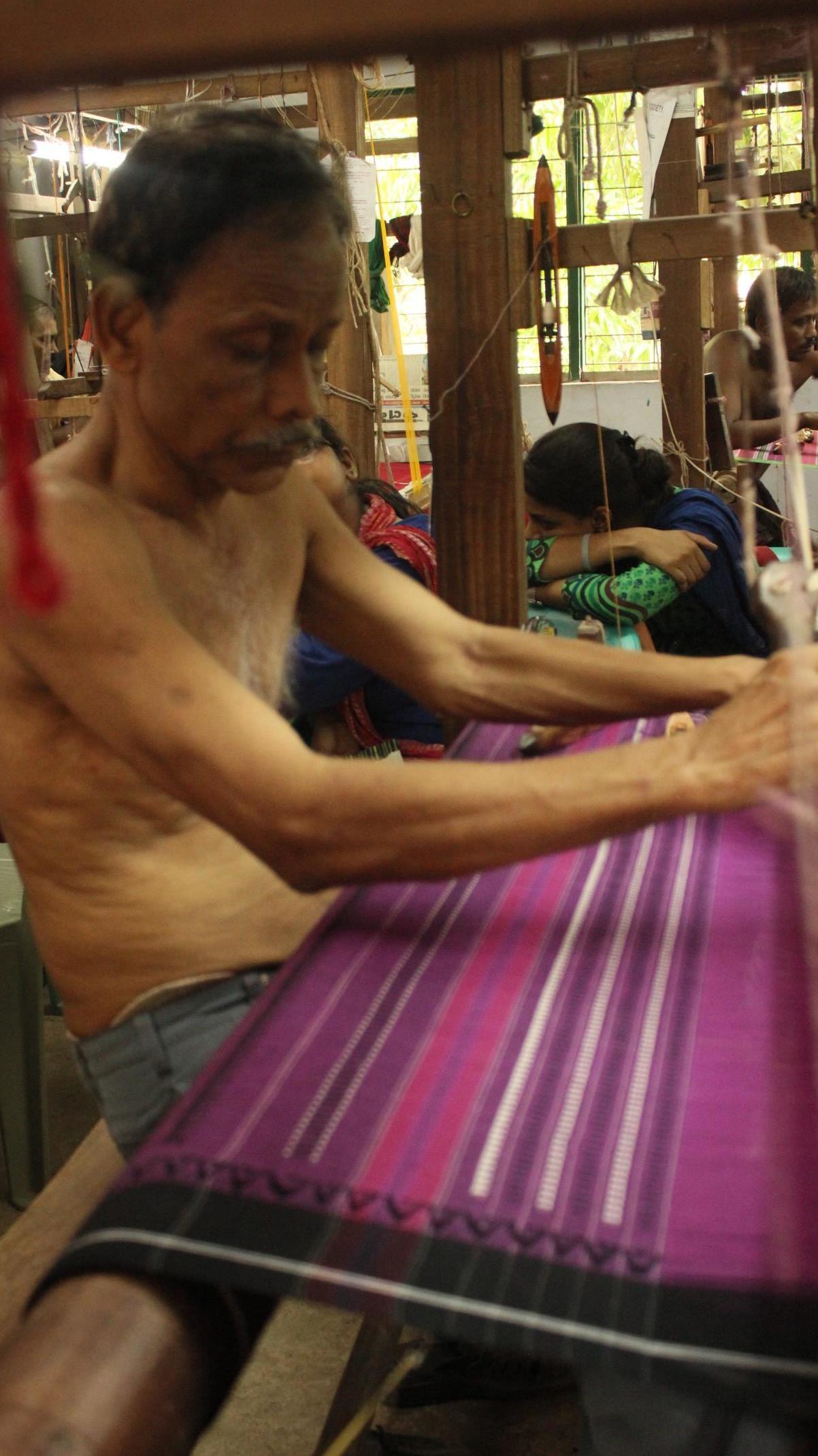
FIGURE: 6.20- WEAVING PROCESS OF SAREE
FOLDING
Then once the saree is made beam is removed and kept in sunlight for a while to stiffen the starch and gum. Once dried, the saree is folded in a set pattern. It takes two people to do this task it is usually the husband and wife who do this and tie it. The sarees are then stacked and covered with fabric, ready to be taken to the involved organisation (WSC). The traditional sarees of Begampur are generally called ‗Matha par‘ sarees. The word comes from the Bengali ‗Matha par‘ which translates to ‗thick border‘. They are also called ‗Begampuri sarees‘. These sarees have plain coloured fields with plain broad borders of a different solid colour. The ‗pallu‘ may have some amount of design, created by making sheds with the help of bamboo rods and passing the weft through them. Jacquard or dobby is not required for making these sarees. Earlier, these sarees were five metres long. However, nowadays the weavers have increased it to five and a half metres. The width while weaving is fifty inches, but once dismounted from the loom, it shrinks to forty eight inches. The yarns may range in count from 40 S to 100 S. The colours are traditionally dark and rich, like red, maroon, orange, dark greens and blues, etc.


